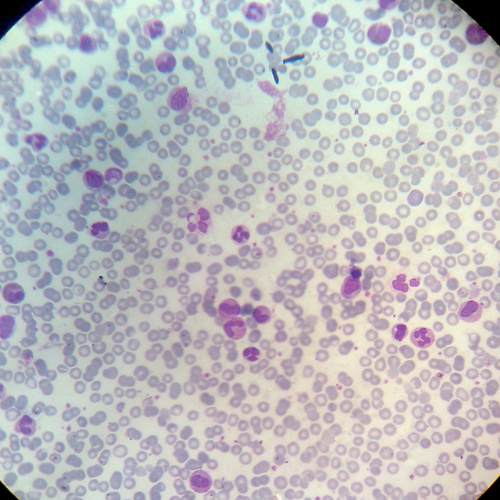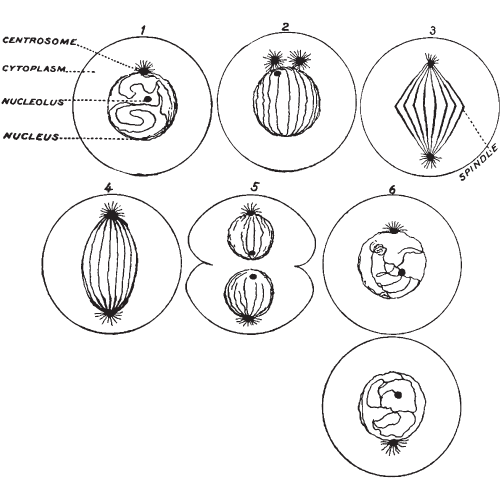Cracking the Folate Code: How Genes Impact Vitamin B9 Absorption

- What is Folate?
- Historical Timeline of the Discovery of Vitamin B9
- Why do we need folate (vitamin B9)?
- Recommended Dietary Allowance (RDA) of folate
- Food sources of folate
- Factors that Affect Absorption of Vitamin B9 (Folate)
- What is Folate Deficiency?
- Reference
What is Folate?
Folate, also known as vitamin B9, is an essential nutrient that plays a crucial role in various bodily functions.
It is a water-soluble vitamin that cannot be synthesized by the body and must be obtained through the diet.
Folate is involved in DNA synthesis, red blood cell production, and the metabolism of amino acids.
It is particularly important during periods of rapid growth and development, such as pregnancy.
Historical Timeline of the Discovery of Vitamin B9
Early history
In the early 20th century, researchers were investigating the causes of megaloblastic anemia, a condition characterized by enlarged and structurally abnormal red blood cells.

This led to the discovery of various dietary factors, including folate, as potential contributors to this form of anemia.
In 1931, an English researcher named Lucy Wills made a groundbreaking observation.
While studying anemia in pregnant women in Bombay, India, she observed that the condition could be reversed by consuming brewer’s yeast.
Through her meticulous experiments, she identified that an unknown factor in the yeast, later identified as folate, played a crucial role in preventing and treating anemia.
Building upon Wills’ work, other researchers began investigating the nature of this newly discovered factor.
In the late 1930s, folate was isolated from brewer’s yeast, allowing further studies on its structure and function.
The first extraction of folate
In 1941, folate was first extracted from spinach, providing another natural source of this important nutrient.
The term “folic” is derived from the Latin word ‘Folium,’ meaning leaf, as it was initially extracted from plant sources such as spinach leaves.
Further advancements in the understanding of folate came in 1943 when the crystalline form of folate was successfully extracted.
This breakthrough formed the basis for the synthesis of Aminopterin, a derivative of folic acid.
Aminopterin was the first-ever anticancer drug developed, and its clinical efficacy was proven in 1948.
Applications in human health
In subsequent years, the role of folate in human health became increasingly recognized.
Folate’s importance in red blood cell production, DNA synthesis, and various metabolic processes gained attention, particularly its significance during pregnancy for preventing neural tube defects in developing fetuses.
Genetic discovery
Over time, researchers identified genetic factors that influence folate metabolism.
Genetic variations in enzymes involved in folate metabolism, such as the MTHFR gene, were found to impact the efficiency of folate conversion and utilization within the body.
These genetic insights provided a deeper understanding of the individual variations in folate metabolism and its potential implications for health.
Looking forward
Today, the significance of folate remains a subject of ongoing research.
Scientists continue to explore the intricate connections between folate, genes, and human health, uncovering further insights into the role of this essential nutrient and its impact on various physiological processes.
The evolving understanding of vitamin B9, from its discovery by Lucy Wills to the exploration of genetic influences, has paved the way for advancements in nutrition, medicine, and public health.
The rich history of folate highlights its profound importance in human well-being and underscores the ongoing quest to unravel its complexities and harness its potential for improving health outcomes.
Why do we need folate (vitamin B9)?
Folate has been a vital nutrient throughout evolutionary history, and its significance can be observed across different species.
Here are some key evolutionary aspects of vitamin B9:
- DNA Synthesis and Cell Division: Folate plays a critical role in DNA synthesis, repair, and cell division. These processes are essential for the growth, development, and maintenance of organisms. By providing the necessary building blocks for DNA replication, folate ensures the accurate transmission of genetic information from one generation to the next.

- Red Blood Cell Production: Folate is necessary for the production of red blood cells, which are responsible for carrying oxygen throughout the body. Adequate folate levels support the optimal functioning of the circulatory system, ensuring efficient oxygen delivery to tissues and organs.
- Reproduction and Development: Folate is especially important during periods of rapid growth and reproduction. In reproductive organisms, folate is crucial for proper fetal development and the prevention of certain birth defects, such as neural tube defects. Folate deficiency during pregnancy can have detrimental effects on the developing fetus, highlighting the evolutionary importance of maintaining adequate folate levels for successful reproduction.

- Protection Against Oxidative Stress: Folate acts as an antioxidant and helps protect cells from oxidative damage caused by free radicals. By scavenging these harmful molecules, folate contributes to cellular health and supports the overall resilience of organisms in their environments.
- Energy Metabolism: Folate is involved in various metabolic pathways, including the breakdown and utilization of carbohydrates, proteins, and fats for energy production. Optimal folate levels ensure efficient energy metabolism, allowing organisms to meet their energy demands for survival, growth, and reproduction.
- Maintenance of Genetic Stability: Folate is essential for maintaining the stability and integrity of the genome. Through its involvement in DNA synthesis and repair, folate helps prevent errors in DNA replication and the accumulation of mutations. This supports the long-term survival and adaptation of species by reducing the risk of genetic abnormalities and promoting genetic diversity.
It is important to note that folate requirements can vary among species, and different organisms may have distinct mechanisms for obtaining or synthesizing folate.
Some organisms, such as plants, can produce folate de novo, while others rely on obtaining it from their diet or through symbiotic relationships with microorganisms.
Overall, the evolutionary significance of vitamin B9 lies in its vital contributions to genetic stability, reproduction, growth, and the overall well-being of organisms.
Through its essential roles in cellular processes, folate has been a key factor in the successful adaptation and survival of species throughout evolutionary history.
Recommended Dietary Allowance (RDA) of folate
The Recommended Dietary Allowance (RDA) for folate varies depending on age, sex, and life stage.
For adults, the RDA is typically around 400 micrograms of dietary folate equivalents (DFE) per day.
Pregnant women have higher requirements and are advised to consume 600 micrograms of DFE daily.
Food sources of folate

Dark leafy greens such as spinach and kale, legumes, citrus fruits, and whole grains are excellent sources of folate.
Other foods like avocados, broccoli, beets, and lentils also provide significant amounts of folate.
Vegan/Vegetarian Sources
Vegan sources of folate include plant-based foods such as leafy greens, legumes, and fortified grain products.
Animal Sources
Animal sources of folate include organ meats, such as liver, as well as eggs and dairy products.
However, it is important to note that folate deficiency can occur in individuals following vegan or vegetarian diets if they do not consume sufficient folate-rich foods.
Factors that Affect Absorption of Vitamin B9 (Folate)
Non-genetic factors affecting folate absorption
Several non-genetic factors can influence the absorption of folate.
These include certain medications, excessive alcohol consumption, smoking, certain medical conditions affecting the digestive system, and inadequate dietary intake.
Genetic factors affecting folate absorption
| Gene Name | SNP Variation | Function/Impact |
|---|---|---|
| MTHFR | rs1801133 (C677T) | Reduced enzyme activity; is associated with lower serum folate levels. |
| SLC19A1 | rs1051266 (G80A) | Decreased folate transport efficiency. |
| DHFR | rs70991108 (19bp deletion) | Reduced enzyme activity; altered folate metabolism. |
| FOLH1 | rs202676 | Altered folate metabolism. |
Genetic variations can impact the absorption and utilization of folate in the body.
For example, mutations in the genes involved in folate metabolism, such as MTHFR, can affect the efficiency of folate conversion and utilization.
These genetic variations can lead to differences in folate levels among individuals.
MTHFR (Methylenetetrahydrofolate Reductase) | rs1801133 (C677T) |
This SNP affects the efficiency of MTHFR enzyme activity, which is responsible for converting 5,10-methylenetetrahydrofolate to 5-methyltetrahydrofolate. The 677TT genotype is associated with reduced enzyme activity and lower serum folate levels compared to the 677CC or 677CT genotypes.
Check your 23andMe, AncestryDNA raw data for MTHFR Gene variants
SLC19A1 (Solute Carrier Family 19 Member 1) | rs1051266 (G80A) |
This SNP is related to the expression and function of the reduced folate carrier protein, which facilitates the transport of folate into cells. The 80AA genotype has been associated with decreased folate transport efficiency.
Check your 23andMe, AncestryDNA raw data for SLC19A1 Gene variants
DHFR (Dihydrofolate Reductase) | rs70991108 (19bp deletion) |
This SNP involves a 19-base pair deletion in the DHFR gene, which encodes the dihydrofolate reductase enzyme.
This deletion variant has been associated with reduced enzyme activity and altered folate metabolism.
Check your 23andMe, AncestryDNA raw data for DHFR Gene variants
FOLH1 (Folate Hydrolase 1) | rs202676 |
This SNP affects the expression of the FOLH1 gene, which encodes the folate hydrolase enzyme. It has been linked to alterations in folate metabolism and folate levels.
Check your 23andMe, AncestryDNA raw data for FOLH1 Gene variants
These are just a few examples of genes and SNP variations that have been studied in the context of folate metabolism and absorption.
However, it’s important to note that the effects of these genetic variations can vary among individuals and populations.
Other genes and SNP variations may also be relevant in the field of folate genetics.
It is worth mentioning that genetic testing and interpretation should be carried out by healthcare professionals or genetic counselors who can provide personalized advice based on an individual’s specific genetic profile and health circumstances.
What is Folate Deficiency?
Folate deficiency can occur due to inadequate dietary intake, malabsorption issues, or increased requirements, such as during pregnancy.
Folate deficiency can lead to various health problems, including megaloblastic anemia, neural tube defects in infants, and an increased risk of cardiovascular disease.
Reference
- Ames BN. DNA damage from micronutrient deficiencies is likely to be a major cause of cancer. Mutat Res. 2001;475(1-2):7-20.
- Field MS, Stover PJ. Safety of folic acid. Ann N Y Acad Sci. 2018;1414(1):59-71.
- Shaw GM, Carmichael SL, Yang W, et al. One-carbon metabolite levels in mid-pregnancy and risks of conotruncal heart defects. Birth Defects Res A Clin Mol Teratol. 2010;88(3):144-151.
- Mitchell HK. Folic acid and vitamin B12. British Medical Journal. 1941;2(4212):358-359. doi:10.1136/bmj.2.4212.358
- Wills L. An Experimental Study of the Etiology of Macrocytic Anemia. British Medical Journal. 1931;1(3665):691-696. doi:10.1136/bmj.1.3665.691
- Bailey LB, Stover PJ, McNulty H, et al. Biomarkers of Nutrition for Development-Folate Review. Journal of Nutrition. 2015;145(7):1636S-1680S. doi:10.3945/jn.114.206599
Written By
Share this article












